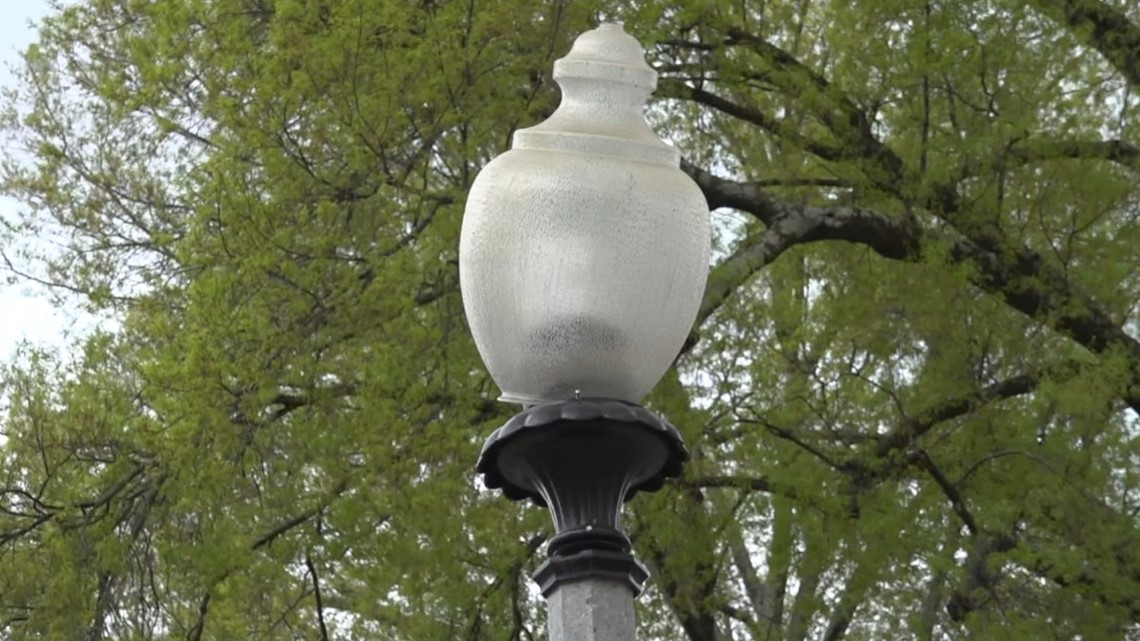APRIL 14, 2024 – After the Ridges moved to St. Cloud, their old house was occupied in succession by the Roeckers, the Fenwicks, and the Snyders. As mentioned in the Introduction to this series, The Neighbors, a while after acquiring their airplane, our friends the Roeckers moved to the other side of town. That made way for “Father Jim,” his wife Mabel, and their sons Bob and John and daughter Elizabeth. Father Jim was the rector of our church, Trinity Episcopal Church. He was a smart, gracious, upbeat, well-spoken individual whom everyone liked, though he could get stern if you got out of line, as his own son John did when he, John, and my sister Jenny were juvenile delinquents for a day straight out of second grade, but I’m getting ahead of myself.
Mabel was our neighborhood’s—make that whole town’s—first and unwitting experience with DEI. She was Japanese-Hawaiian and looked very exotic amidst the white Northern European background of 100% of Anokans prior to her arrival. If she felt at all the stranger, Mabel didn’t let on, and she was well received by everyone, given her kind and outgoing disposition. She was showered with sympathy when her brother was killed in a surfing accident back in Hawaii.
Bob Fenwick, already in high school when the family moved to Rice Street, was quite a bit older than John, who was Jenny’s age, and Elizabeth, a year younger than those two. Bob was a handsome, serious-looking guy, who could easily be mistaken for a full-fledged grown-up. He was a three-season varsity sports player—football, basketball, and baseball—and if my memory is accurate, he wound up playing minor league baseball for a time after college, with a serious shot at the majors.
We saw lots of the family but far more at church across town than two doors down on Rice Street. I remember two aspects of their life on Rice.
The first was their Christmas tree one year. They’d planted it directly in front of the picture window facing the street (see the image featured in yesterday’s post). What was obvious from the street as we walked or drove by was that the short-needled balsam fir had been too tall for the living room. How did we know that? Father Jim had cut it down to size, but instead of cutting a length off the bottom, he’d pruned the top. The result was a ridiculous looking flat-top tree. This bugged me something fierce, but no one else seemed to notice—or mind—not even Dad, which surprised me. The brutal treatment of the tree by Father Jim (I presumed—I couldn’t imagine that Mabel, being rather petite and refined would’ve taken the clippers to the tree) surprised me, especially in light of my having seen his penmanship, which was the most perfect I’d ever seen, except for Dad’s.
John and Elizabeth were well-adjusted kids, but as I’ve alluded above—and the second thing I remember about Fenwicks’ life at 443 Rice—John displayed mischievous tendencies early in his career.
One summer afternoon he and Jenny got the idea that it would be fun to field sizable pebbles from the street gutter and pitch them at the street light globes that graced our street. It was the only street on our side of town that had such decorative lights—the result of Fred Moore’s lobbying efforts at city hall a few years before we moved to Anoka.
In due course, almost every light globe along Rice Street bore the signs of a rock attack—before John and Jenny found some other form of destructive entertainment.
That evening after work when Dad and Fred Moore discovered the damage, they conferred about it, incensed by the senseless juvenile delinquency that had visited our quiet, leafy street. They groused feverishly, complaining to each other how “the cops are never around when you need ’em”—such as when the Caines’ dog was barking at one in the morning or when “hoods” decided to attract the attention of girls by squealing the tires of their souped-up cars on a hot, crowded afternoon down at the beach at our end of Rice Street or . . . juvenile delinquents decided on a whim to throw rocks at the street lights, busting almost every one of them.
Dad, of course, would’ve been mortified if he’d learned that his young daughter was one of the “juvenile delinquents.” Fred would’ve been just as shocked. In his eyes (and ears), my violin-playing sisters could do no wrong. But word traveled fast up and down the street, and traveling even faster, at least to the Fenwicks’ home, was the awful rumor that John Fenwick had somehow had a hand in the destruction.
As Jenny reported the “come to Jesus” moment, Father Jim was not his cheerful self when confronting John with the God-awful truth. John tried to wriggle free by telling of Jenny’s complicity. The ploy didn’t work, but not because “two wrongs don’t make a right.” Jenny, standing next to John, hid behind her silence and appearance of innocence. In response to John’s attempt to turn on his accomplice, his father said, “Jenny is too nice a kid to have engaged in such bad behavior.”
Her secret was maintained until decades later, when it was revealed to everyone’s considerable amusement. By that time the Fenwicks had long moved from Rice Street . . . and Anoka, after Father Jim had accepted a position at a larger parish on the West Coast—still far from Mabel’s place of origin but half the distance that separated Hawaii from Anoka. Everyone was sorry to see the family leave.
Subscribe to this blog and receive notifications of new posts by email.
© 2024 by Eric Nilsson
